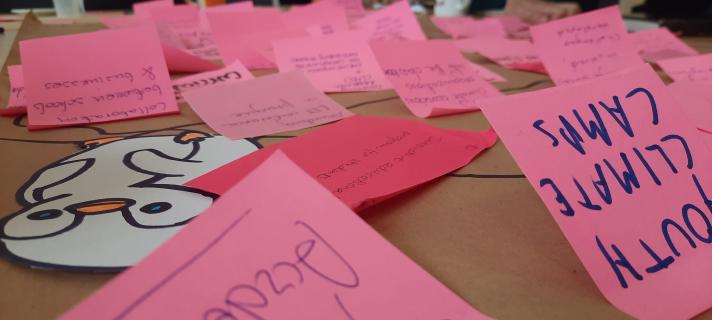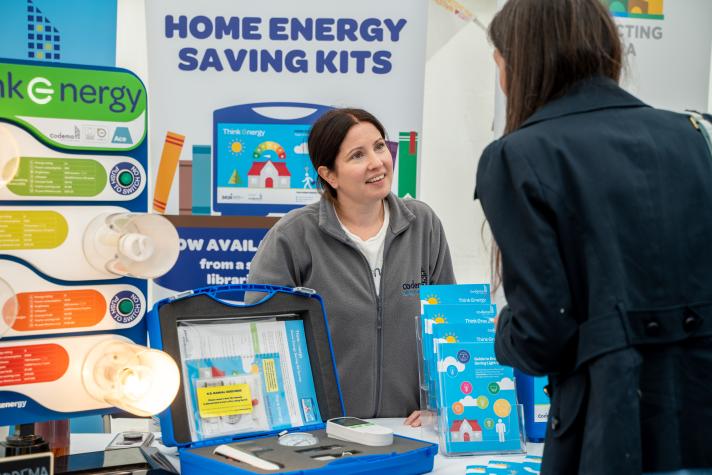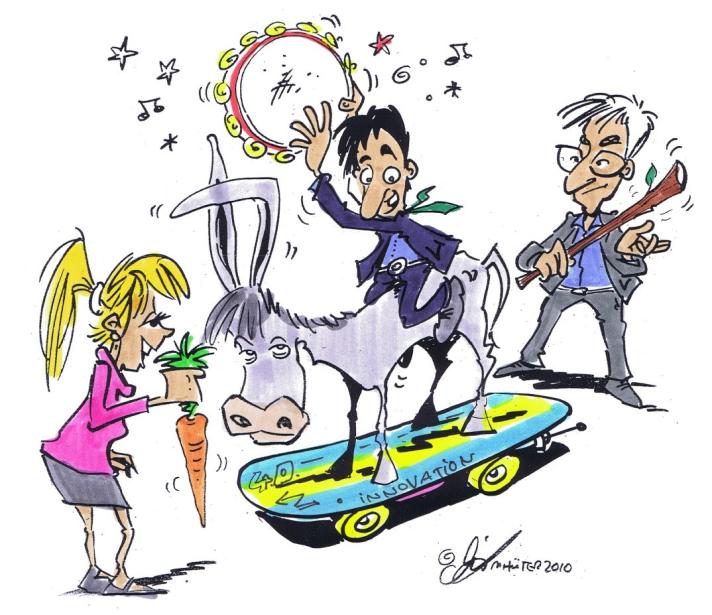
When you think of an energy agency, what comes to mind? Perhaps a team of engineers and technical experts dedicated to helping public authorities, businesses, and citizens across Europe develop and implement climate and energy initiatives. While this image is largely accurate, it overlooks a vital aspect of their work: the essential role of soft skills, particularly communication.
Communication is at the heart of what local and regional energy agencies do every day. Whether it’s visiting schools to educate children about climate change, creating awareness campaigns to promote energy efficiency and sufficiency, or pitching innovative projects to investors and public authorities, these agencies rely on communication to make a lasting impact. These examples, though just a glimpse, highlight the diverse and powerful ways communication is integrated into their mission.
Yes, communication is key. But how can it be done effectively? How can an organisation be recognised as both a technical powerhouse and a communication expert? Let’s hear from some energy agencies that have mastered this balance.
Investing in Communication
In 2002, Paddy Phelan founded the South East Energy Agency. Fast forward to 2020, during a strategic review, Phelan made a bold decision: to allocate 10% of the agency’s turnover to marketing and communication. “At the time, people thought I was insane,” he recalls. “But this strategy proved successful and allowed us to grow further. Today, we have a communications department of four employees. If the agency is what it is today, it’s also thanks to them, and it’s a decision the board will never regret.”.
“Many local players deprioritise communication due to limited resources and expertise. At ESV, communication isn’t an add-on; it’s integral to our approach,” says Christiane Egger, OÖ Energiesparverband’s Deputy Managing Director. “At least 20% of an agency’s time and budget should be dedicated to communication efforts,” she emphasizes.
Similarly, since its founding, the Cyprus Energy Agency (CEA) has prioritized education and awareness as key drivers for lasting change in energy and sustainability, with communication playing a crucial role in these efforts. While dedicated communications professionals have been in place since 2019, “communication remains a shared responsibility, with staff allocating 5-15% of their time to these efforts,” says Andreas Pastides, CEA’s Communications Manager, highlighting the essential role communication plays in the agency's operations and initiatives.
Building Trust Through Communication
As the national representative for several European initiatives, CEA’s comprehensive, annually updated communication strategy has been vital in engaging and building trust among local, national, European, and international players. This strategy, aligned with evolving priorities and long-term goals, has been key to maintaining public trust and support—an essential element for the Agency’s success.
Notably, the CEA has excelled in engaging and building trust with youth—a traditionally challenging audience—through partnerships with schools and participation in European programmes such as EIT Climate-KIC’s initiatives. These efforts have resulted in significant youth involvement in major projects, including the Horizon 2020 project PEDIA, which focuses on upgrading public schools to Nearly Zero Energy Buildings, and the Race to Zero Universities and Colleges initiative, aimed at decarbonising academic institutions.
A 360° Communication Approach
Dublin’s Energy Agency, Codema, has developed a comprehensive communication approach. In 2009, Suzanne Fitzpatrick was the only person handling communications. Today, she leads a team of six, managing the agency’s communications, awareness, and engagement efforts. “With climate issues gaining more attention, we were able to expand our communication activities,” Fitzpatrick explains. “We handle everything from standard marketing actions to event organisation and project result dissemination. It’s an all-around communication service.”
Codema’s communication strategy centres around four key activities: best-practice public and stakeholder engagement, energy awareness initiatives, project marketing, and event facilitation. These efforts are designed to effectively engage the community and promote sustainable energy practices. Recently, Codema has also begun exploring innovative approaches, such as leveraging sufficiency influencers and ambassadors, to further encourage sustainable behaviour and amplify their message.
Targeted Communication for Maximum Impact
From its inception, OÖ Energiesparverband, the regional energy agency of Upper Austria (ESV) communication strategy has been rooted in what they call the “stick, carrot, skateboard and tambourine” principle—an all-rounded approach to market transformation trying to change the behaviour of a metaphorical donkey.
In specific policy packages, the carrot represents financial incentives, the stick symbolises regulations, the skateboard stands for innovation, and the tambourine represents communication, promotion, and awareness—all key elements in influencing mindsets.
Communication at ESV takes many forms. The most important initiative is their energy advice programme which involves home visits to provide personalised energy assistance, resulting in over 10,000 face-to-face sessions annually. This initiative not only deepens community ties but also keeps ESV connected with their audience and aware of market developments
Maximising the impact of efforts is crucial. Selecting where to focus efforts is key and at ESV they do this through market segmentation. By investing time in understanding different target groups, ESV has developed a clear sense of what resonates most effectively with whom. For many target groups, ESV mainly prioritises email marketing, leveraging an extensive email database, and also focuses on paper publications, which have proven effective for example for homeowners.
In the complex world of energy and sustainability, communication is not just a tool but a powerful catalyst for change. Through their strategic approach to communication, these Energy Agencies have strengthened communities, deepened understanding, and are ultimately driving the transformation needed for a sustainable future for all.
Details
- Publication date
- 11 October 2024
- Author
- European Climate, Infrastructure and Environment Executive Agency



